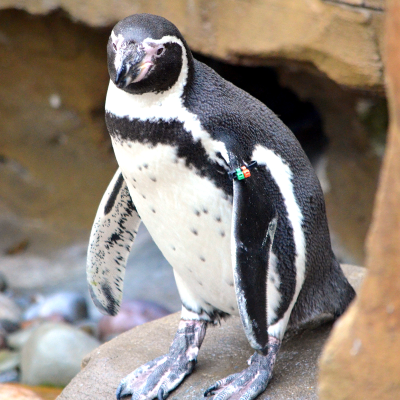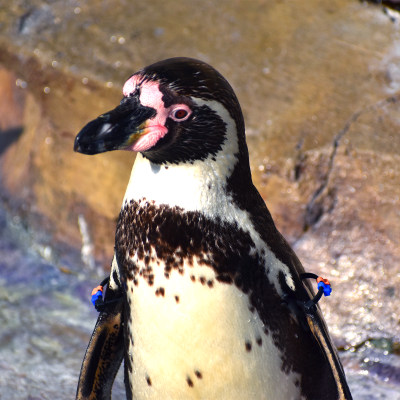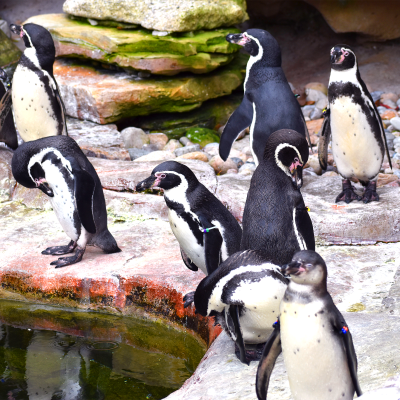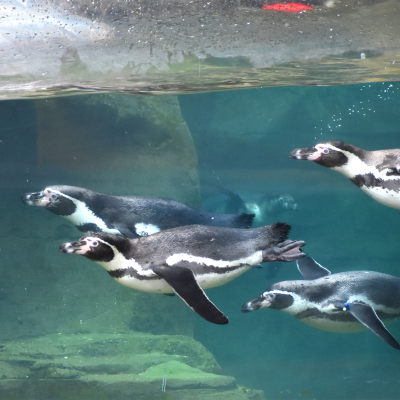About Humboldt Penguins
The adult Humboldt penguin is about 26 inches tall and weighs about nine pounds, which is roughly mid-sized of all penguin species.
The Humboldt penguin is brown-black with a white front and is distinguished by a dark stripe across its front. The tuxedo color of the penguin is an adaptation that is called counter-shading. If a predator is below the penguin and it looks up, the penguin blends in with the bright light from above. If a predator is above the penguin and it looks down, the penguin blends in with the dark bottom.
The male and the female penguin cannot be distinguished from one another without the aid of distinct behavioral cues (blood samples can also be used for distinction).
The penguin is well adapted to life at sea, but it still has “true” bird feathers. These include a dense covering of three layers of short feathers, wings that have been reduced to strong, narrow, stiff flippers and stout tail feathers that are used as a prop when the penguin stands.
Webbed feet are also located far back on the body and are used as rudders when the penguin swims.
The penguin has a supraorbital gland that enables it to drink salt water in addition to fresh water. The gland withdraws excess salt from the penguin’s blood and excretes it in a very concentrated solution that dribbles down the penguin’s bill. Penguins live in fresh water in most zoos, so this gland is dormant.
Humboldt penguins are very social animals; they live in large colonies where communication is important. The colonies are very important because they serve as a form of defense.
Unlike the Antarctic penguins that huddle together in large groups to keep warm, Humboldt penguins have no need to huddle together for warmth because they live in a warm, temperate climate. Instead, in order to cool down or warm up, Humboldt penguins will often retire in their nesting burrows.
Humboldt Penguin at the Akron Zoo
The Akron Zoo’s penguin habitat, Penguin Point, is the first habitat guests visit when they enter the zoo. Each penguin wears an ID band — the males are black and the females are clear with a unique color combination.
- Pez – male, born Jan. 8, 2011 (black band with purple and yellow)
- Gabriella – female, born April 6, 2010 (clear band with purple and green)
- Schnitzel – male, born March 9, 2014 (black band with blue and clear)
- Mouse – female, born Dec. 9, 2013 (clear band with black and blue)
- Franz – male, born March 25, 2014 (black band with yellow and clear)
- Titi – female, born May 20, 2006 (clear band with blue and purple)
- Zeke – male, born Feb. 20, 2015 (black band with purple and orange)
- Marcona – female, born April 18, 2016 (clear band with black and green)
- Guapo – male, born May 4, 2007 (black band with green and clear)
- Pluma – female, born May 23, 2016 (clear band with green and yellow)
- Pedro – male, born July 8, 2012 (black band with green and orange)
- Anchovetta (Chovie) – female, born May 28, 2016 (clear band with double black)
- Huevo – male, born July 7, 2017 (black band with double purple)
- Ernesto (Ernie) – male, born March 12, 2021 (black band with double orange)
- Xiomara – female, born April 5, 2021 (clear band with double green)





